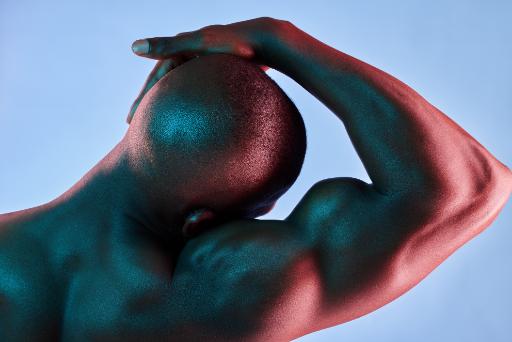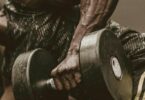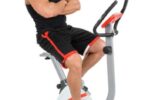Building solid and muscular biceps is a common goal for many fitness enthusiasts. Whether you’re looking to improve your lifting prowess or want to enhance your physique, incorporating effective biceps exercises into your routine is key. This comprehensive guide will delve into some of the best workouts for achieving impressive biceps, focusing on techniques that target muscle growth and strength.
The Anatomy of the Biceps
Before we jump into the workouts, it’s important to understand the biceps muscle group. The biceps brachii, commonly known as the biceps, is a two-headed muscle located on the upper arm between the shoulder and the elbow. This muscle is responsible for the flexion and rotation of the forearm. By targeting both heads of the biceps, you can achieve well-rounded development and strength.
Essential Biceps Exercises
Barbell Drag Curl
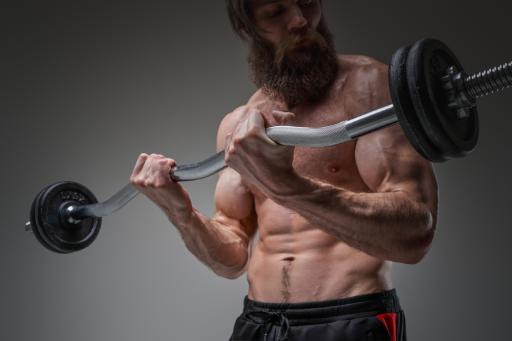
The Barbell Drag Curl is a variation of the traditional biceps curl exercise designed to increase bicep peaks. Barbell Drag Curl involves a unique elbow position that differentiates it from regular curls. Here’s a step-by-step guide on how to perform Barbell Drag Curl :
- Grip the Bar: Stand with your arms hanging freely at your sides and grip a barbell with palms facing up. Ensure your shoulder blades are retracted and depressed.
- Stand Tall: Adopt a shoulder-width stance with a slight bend in the knees. Brace your core and maintain this semi-hinged position throughout the exercise.
- Curl: Keep the bar close to your body as you curl it upwards, moving your elbows back slightly. The bar should drag along the body, hence the name.
Barbell Drag Curl exercise targets the biceps brachii and is great for building arm strength and size while minimizing deltoid involvement.
Barbell Reverse Curl
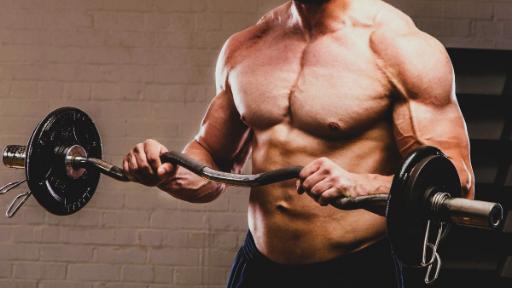
The Barbell Reverse Curl is a strength exercise that targets the muscles in the arms, particularly the brachioradialis, brachialis, and biceps brachii. Barbell Reverse Curl is performed with an overhand grip (palms facing down), which also engages the forearm extensors. Here’s how to do the Barbell Reverse Curl correctly:
- Prepare the Barbell: Load an appropriate amount of weight onto a barbell.
- Grip: Stand with your feet hip-width apart and grab the bar with a shoulder-width overhand grip.
- Starting Position: Let the barbell rest against your thighs with your elbows extended.
- Curl: Keeping your elbows still, curl the weight toward your shoulders by moving your forearms toward your biceps.
- Squeeze: Lift until the tops of your forearms make contact with your biceps, hold the contraction, then lower the barbell under control until your elbows are fully extended.
Perform Barbell Reverse Curl 3-5 sets of 6-12 reps. Remember to maintain proper form to prevent swinging or using momentum, which can reduce the effectiveness of the exercise.
Close Grip Barbell Curl
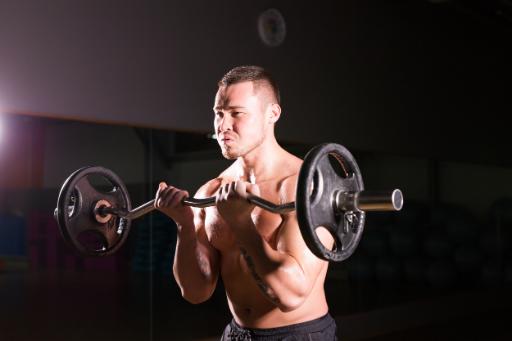
The Close Grip Barbell Curl is an exercise that targets the biceps, particularly the long head, which contributes to the bicep peak. Close Grip Barbell Curl is performed with a narrower grip compared to the traditional barbell curl, which helps to isolate and emphasize the outer head of the biceps. Here’s how to perform the Close Grip Barbell Curl:
- Stand with your feet hip-width apart and a slight bend in your knees.
- Grasp the barbell with an underhand grip and palms facing forward. Keep your hands closer than shoulder-width apart.
- Keep your elbows close to your torso throughout the movement, and position your hands under your shoulders.
- Curl the barbell upward in a semicircular motion as you exhale, keeping the bar close to your body.
- Squeeze your biceps at the top of the movement, then slowly lower the barbell back to the starting position.
Perform Close Grip Barbell Curl 3-5 sets of 8-15 reps, focusing on maintaining good form to maximize bicep engagement and minimize the involvement of other muscles. Remember to control the weight throughout the exercise to prevent using momentum.
Reverse Dumbbell Curl
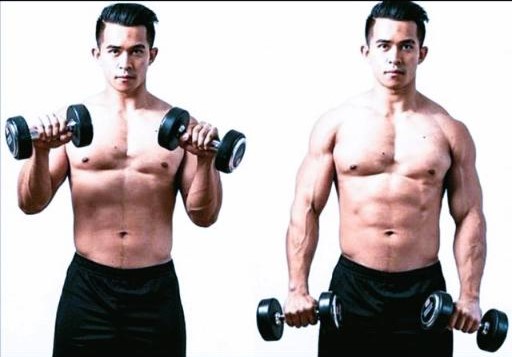
The Reverse Dumbbell Curl is a strength exercise that targets the muscles in the arms, particularly the brachioradialis, brachialis, and biceps brachii. Reverse Dumbbell Curl performed with an overhand grip (palms facing down), which also engages the forearm extensors. Here’s how to do Reverse Dumbbell Curl correctly:
- Prepare the Barbell: Load an appropriate amount of weight onto a barbell.
- Grip: Stand with your feet hip-width apart and grab the bar with a shoulder-width overhand grip.
- Starting Position: Let the barbell rest against your thighs with your elbows extended.
- Curl: Keeping your elbows still, curl the weight toward your shoulders by moving your forearms toward your biceps.
- Squeeze: Lift until the tops of your forearms make contact with your biceps, hold the contraction, then lower the barbell under control until your elbows are fully extended.
Perform Reverse Dumbbell Curl 3-5 sets of 6-12 reps. Remember to maintain proper form to prevent swinging or using momentum, which can reduce the effectiveness of the exercise.
Cable Hammer Curls
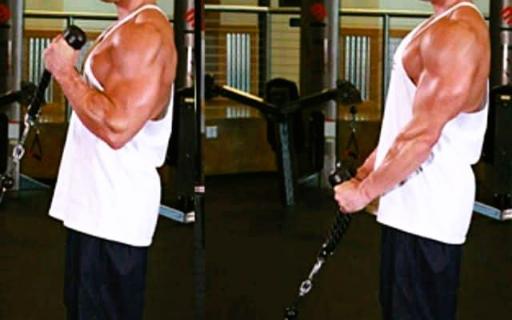
Cable Hammer Curls are a variation of the traditional hammer curl exercise, performed using a cable machine with a rope attachment. Cable Hammer Curls exercises target the biceps and forearms, providing constant tension throughout the movement. Here’s how to perform Cable Hammer Curls :
- Set Up: Attach a rope to the low pulley of a cable machine.
- Stand: Position yourself about 18 inches in front of the weight stack, feet shoulder-width apart.
- Grip: Grasp the ends of the rope with palms facing each other and arms fully extended.
- Curl: Keep your elbows close to your sides and curl your hands upward until your elbows are at a 90-degree angle.
- Squeeze: Pause at the top of the movement, squeeze your biceps, then slowly lower the handles back to the starting position.
Perform Cable Hammer Curls exercises for 3-5 sets of 8-12 reps, focusing on maintaining good form and control. Cable Hammer Curls are excellent for building arm strength and size, and the cable provides a unique resistance profile that can lead to improved muscle growth. Adjust the weight to match your fitness level and to prevent any swinging or momentum during the Cable Hammer Curls exercises.
Incline Dumbbell Biceps Curl
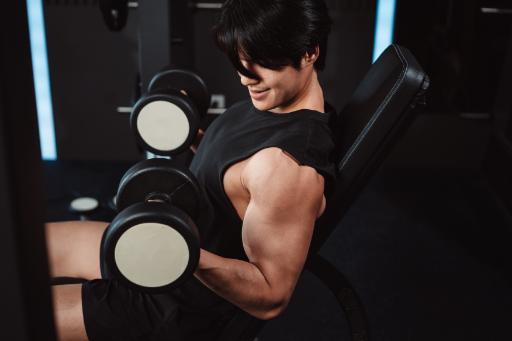
The Incline Dumbbell Biceps Curl is a strength exercise that targets the biceps and can help increase arm muscle definition and size. Here’s how to perform the Incline Dumbbell Biceps Curl :
- Set Up: Sit on an incline bench with a dumbbell in each hand, arms fully extended, and palms facing forward.
- Curl: With elbows fixed and close to your body, curl the weights upward while contracting the biceps.
- Squeeze: Once the dumbbells are at shoulder level, hold the position briefly, then slowly return to the starting position.
Incline Dumbbell Biceps Curl exercise is beneficial because the incline position isolates the biceps and reduces the involvement of the shoulders. Incline Dumbbell Biceps Curl is typically performed for moderate to high reps, such as 8-12 reps per arm or more, as part of an upper-body or arm-focused training. Keep the movement controlled, and avoid using momentum to lift the weights.
Spider Biceps Curl
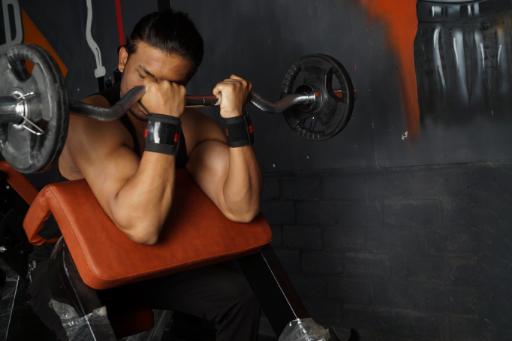
The Spider Biceps Curl is a bicep isolation exercise that’s performed on an incline bench. Spider Biceps Curl targets the biceps brachii, particularly the short head, which contributes to the bicep’s peak. Here’s how to do Spider Biceps Curl :
- Set Up: Position an incline bench at about a 45-degree angle.
- Lie Down: Lie face down on the bench with your torso and stomach pressed against the backrest.
- Grip: Hold a barbell or dumbbells with a supinated grip (palms facing up) with your hands shoulder-width apart.
- Curl: Slowly curl the weights up towards your shoulders, keeping your arms hanging straight down.
- Squeeze: Pause at the top of the movement, squeeze your biceps, then lower the weights under control.
Spider Biceps Curl exercise allows for a greater range of motion and keeps the biceps under constant tension throughout the movement, which can help increase muscle mass and strength. It’s recommended to perform 3-5 sets of 10-15 reps, focusing on proper form and technique to maximize the benefits of the exercise. Select a weight that allows you to perform the exercise with control and without using momentum.
Hammer Curl Variation
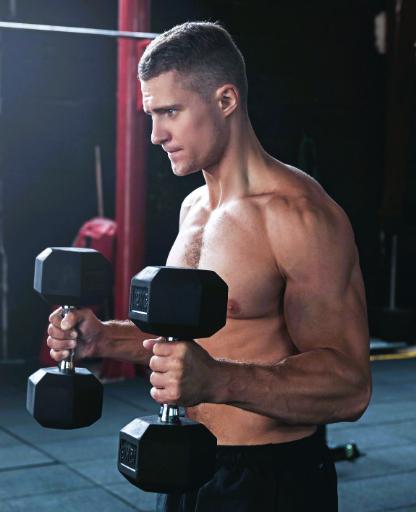
Hammer Curl Variation is a popular exercise for developing the muscles in the upper arms and forearms, particularly the brachioradialis. There are several variations of hammer curls that you can incorporate into your workout routine to target these muscles from different angles and with varying profiles of resistance. Here are a few Hammer Curl Variations :
- Standard Hammer Curls: Performed with dumbbells, keeping your palms facing each other throughout the movement.
- Alternating Hammer Curls: Curl one arm at a time, alternating between the left and right.
- Incline Hammer Curls: Performed seated on an incline bench, which reduces shoulder involvement and increases bicep isolation.
- Cross Body Hammer Curls: Also known as pinwheel curls, where you curl the dumbbell across your body towards the opposite shoulder.
- Cable Hammer Curls: Using a cable machine with a rope attachment to provide constant tension.
- Band Hammer Curls: Using resistance bands instead of weights for added resistance throughout the range of motion.
- Offset Grip Hammer Curls: Holding the dumbbell with your palm facing straight out in front of you at the start of the movement.
Each Hammer Curl Variation has its benefits and can be used to add diversity to your arm workouts.
Bicep Pull Ups
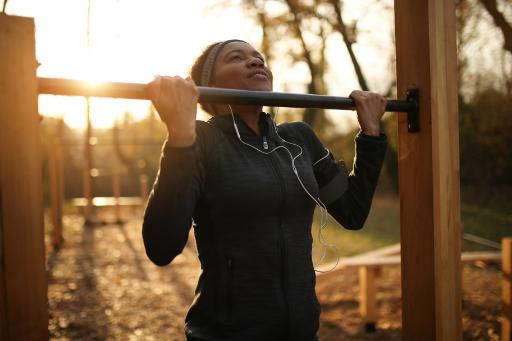
Bicep pull ups , often referred to as chin-ups, are a variation of the traditional pull-up exercise that places more emphasis on the biceps. To perform bicep pull ups effectively, you should use a reverse grip (palms facing you) and a narrow hand spacing. This grip and hand position shift the focus from the back muscles to the biceps. Here’s a step-by-step Bicep pull ups guide:
- Grip the Bar: Grab the pull-up bar with an underhand grip, hands about shoulder-width apart or closer.
- Hang: Let your body hang with arms fully extended, shoulders down, and back.
- Pull Up: Pull yourself up by bending your elbows and squeezing your biceps until your chin is over the bar.
- Lower Down: Lower yourself back to the starting position with control.
For targeting the biceps even more, you can try variations such as:
- Reverse-grip pull-ups: Focuses on the biceps by reversing the handgrip from a regular pull-up.
- Narrow pull-ups: Involves using a narrow grip to place more emphasis on the biceps rather than the back muscles.
Perform Bicep pull ups exercise with controlled movements to maximize bicep engagement and minimize the risk of injury. Aim for 3-5 sets of as many reps as you can manage with good form.
Conclusion
By incorporating these targeted exercises into your biceps workouts, you’ll be on the path to more muscular, more defined arms. Remember to focus on proper form and gradually increase the weight as you progress. With dedication and consistency, you’ll see significant improvements in both the appearance and strength of your biceps.
This blog is designed to be informative and is not a substitute for professional fitness advice. Always consult with a fitness professional before starting any new workout regimen, especially if you have any pre-existing health conditions or concerns.

